
Cesis: The Gem of Latvian Heritage
Explore Cesis, a Latvian town where medieval history meets natural beauty. Discover castles, charming streets, and vibrant cultural events in this enchanting destination.
Nestled in the heart of Latvia, Cesis is a charming town that offers a delightful blend of medieval history, natural beauty, and vibrant culture. With its well-preserved medieval castle, picturesque old town, and lush parks, Cesis is a destination that transports visitors back in time while providing modern amenities and experiences. The centerpiece of Cesis is its impressive medieval castle, built in the 13th century by the Livonian Brothers of the Sword. Visitors can explore the castle ruins, climb the towers for panoramic views, and even participate in medieval-themed events. The adjacent New Castle, with its elegant interiors and extensive art collection, provides a fascinating contrast to the ancient fortress. Cesis is also known for its charming old town, where cobblestone streets are lined with colorful buildings, quaint cafes, and unique shops. The central square, with its historic church and lively atmosphere, is the perfect place to relax and soak in the local culture. Throughout the year, Cesis hosts various festivals and cultural events, showcasing the town's rich traditions and creative spirit. Nature lovers will find plenty to enjoy in Cesis, from the beautiful Gauja National Park to the serene parks and gardens within the town. Hiking, cycling, and boating are popular activities, offering visitors the chance to experience the stunning landscapes and diverse wildlife of the region. Whether you're interested in history, culture, or outdoor adventures, Cesis has something to offer every traveler.
Local tips in Cesis
- Visit the Cesis Medieval Castle early in the morning to avoid crowds and enjoy the peaceful atmosphere.
- Take a guided tour of the Old Town to learn about its history and hidden gems from a local expert.
- Check the local event calendar for festivals and cultural events happening during your stay.
- Rent a bike to explore the scenic trails in Gauja National Park.
- Try traditional Latvian dishes at one of the local restaurants for an authentic culinary experience.
Cesis: The Gem of Latvian Heritage
Nestled in the heart of Latvia, Cesis is a charming town that offers a delightful blend of medieval history, natural beauty, and vibrant culture. With its well-preserved medieval castle, picturesque old town, and lush parks, Cesis is a destination that transports visitors back in time while providing modern amenities and experiences. The centerpiece of Cesis is its impressive medieval castle, built in the 13th century by the Livonian Brothers of the Sword. Visitors can explore the castle ruins, climb the towers for panoramic views, and even participate in medieval-themed events. The adjacent New Castle, with its elegant interiors and extensive art collection, provides a fascinating contrast to the ancient fortress. Cesis is also known for its charming old town, where cobblestone streets are lined with colorful buildings, quaint cafes, and unique shops. The central square, with its historic church and lively atmosphere, is the perfect place to relax and soak in the local culture. Throughout the year, Cesis hosts various festivals and cultural events, showcasing the town's rich traditions and creative spirit. Nature lovers will find plenty to enjoy in Cesis, from the beautiful Gauja National Park to the serene parks and gardens within the town. Hiking, cycling, and boating are popular activities, offering visitors the chance to experience the stunning landscapes and diverse wildlife of the region. Whether you're interested in history, culture, or outdoor adventures, Cesis has something to offer every traveler.
When is the best time to go to Cesis?
Iconic landmarks you can’t miss
Cēsis Castle
Explore the enchanting Cēsis Castle, a medieval fortress rich in history, stunning architecture, and picturesque landscapes in Latvia.

Cēsis Castle Park
Explore the breathtaking Cēsis Castle Park, where history and nature intertwine in a serene setting filled with ancient ruins and lush landscapes.
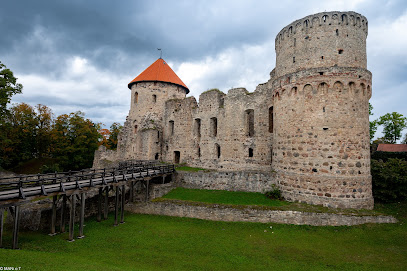
Maija parks
Explore the enchanting Maija Parks in Cēsis, a tranquil oasis for nature lovers and a perfect spot for family adventures amidst stunning landscapes.

Cēsis History and Art Museum
Explore Latvia's rich cultural heritage at the Cēsis History and Art Museum, where art, history, and stunning exhibits await every visitor.
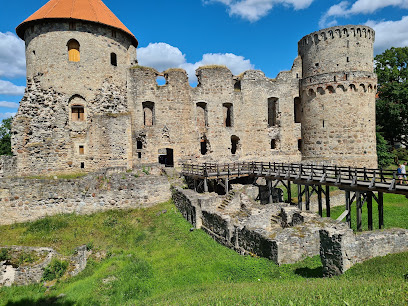
Āraiši lake dwelling Archaeological Park
Explore Āraiši Lake Dwelling Archaeological Park, where history comes alive beside stunning landscapes, revealing Latvia's prehistoric heritage.

Ozolkalns
Experience an unforgettable ski adventure at Ozolkalns, Latvia's premier ski resort, surrounded by stunning natural beauty and cozy lodges.
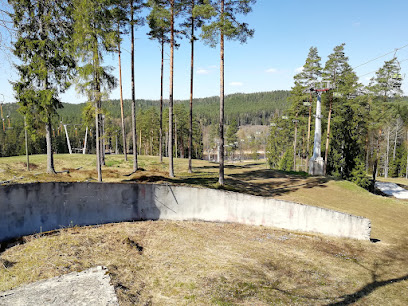
Cirulisi Nature Trails
Discover the breathtaking beauty of Cirulisi Nature Trails, a national park perfect for hiking, wildlife observation, and enjoying Latvia's natural wonders.
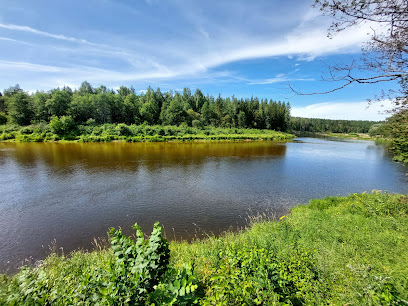
Svētavots
Experience the serenity of Svētavots in Cēsis, where nature's pure spring water meets historical charm for a refreshing retreat.
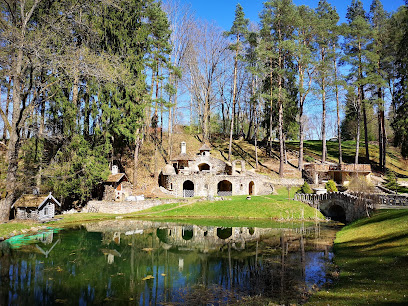
Mala
Explore the vibrant atmosphere of Mala, a café and art gallery in Cēsis, offering vegetarian delights and live music in a creative setting.
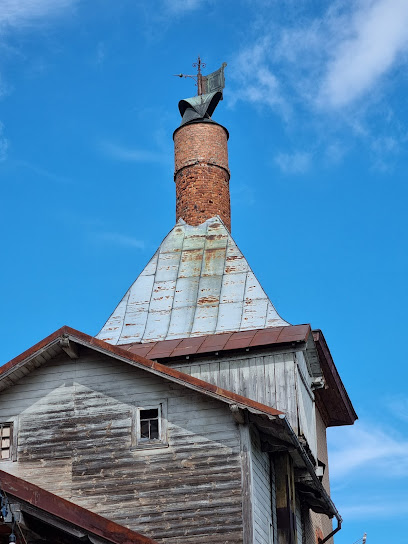
Cēsis Castle Outdoor Stage
Experience the magic of performances at Cēsis Castle Outdoor Stage, where history meets culture in a breathtaking setting.
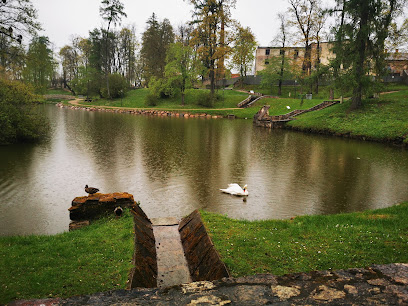
Blacksmith’s cave
Unveil the beauty of nature at the Blacksmith's Cave, a stunning geological wonder in Raiskums Parish, perfect for adventure and exploration.
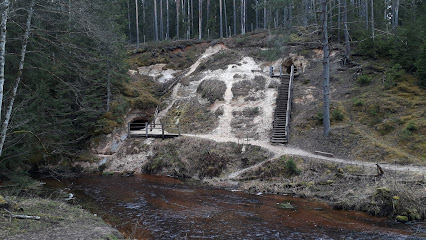
Rūcamavots
Explore the serene landscapes and tranquil waters of Rūcamavots, a nature preserve that offers a perfect escape into Latvia's stunning natural beauty.

Rozu square
Experience the vibrant heart of Cesis at Rozu Square, a blend of historical charm and modern attractions, perfect for every tourist's adventure.
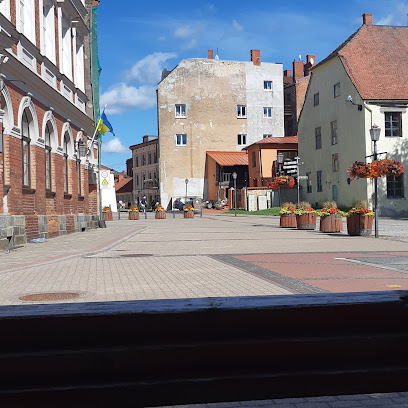
Cēsis Exhibition Hall
Explore the Cēsis Exhibition Hall, a vibrant museum showcasing contemporary art and local history in the heart of Latvia.
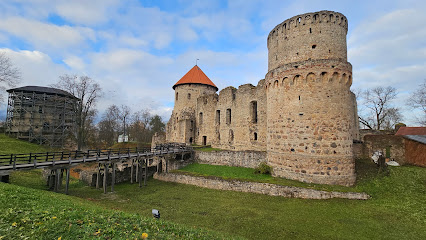
Cēsis Tourism Information Center
Explore Cēsi with ease at the Cēsi Tourism Information Center, offering expert advice and resources for an unforgettable Latvian adventure.

Unmissable attractions to see
Gauja National Park
Explore the stunning landscapes and rich biodiversity of Gauja National Park, a must-visit destination for nature lovers and adventure seekers in Latvia.

Turaida Castle
Discover the enchanting Turaida Castle in Sigulda, a historical marvel surrounded by breathtaking landscapes and rich Latvian heritage.
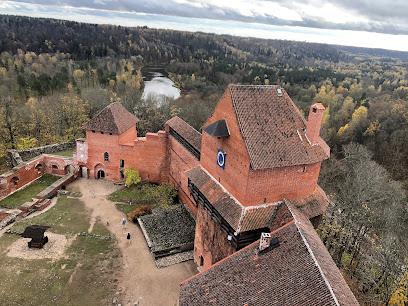
Cēsis Castle
Explore the historical marvel of Cēsis Castle, a medieval fortress with stunning architecture and rich cultural heritage in the heart of Latvia.

Castle Of The Livonian Order In Sigulda
Explore the historic Castle of the Livonian Order in Sigulda, a stunning landmark offering rich history and breathtaking views of Latvia's picturesque landscapes.
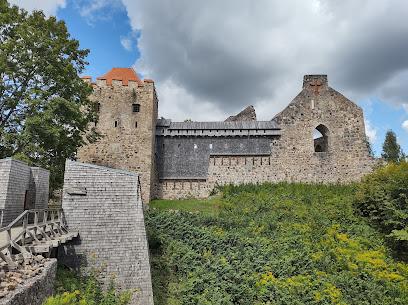
Gutman's Cave
Explore Gutman's Cave in Sigulda, a stunning natural wonder blending history, folklore, and breathtaking landscapes in Latvia's Gauja National Park.

Turaida Museum Reserve
Explore the enchanting Turaida Museum Reserve, a historical haven showcasing Latvia's rich heritage amidst stunning natural beauty.

Līgatne Nature Trails
Discover the breathtaking Līgatne Nature Trails, a serene escape into Latvia's stunning wilderness filled with diverse wildlife and beautiful landscapes.

Sigulda bobsleigh, luge and skeleton track
Discover the thrill of speed at Sigulda's bobsleigh, luge, and skeleton track, set in the stunning Gauja National Park.
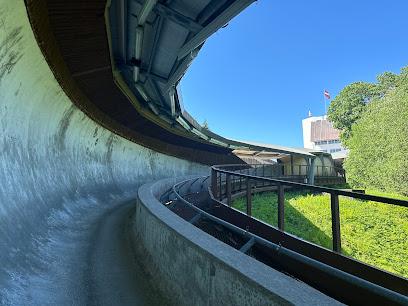
Maija parks
Experience the breathtaking beauty and tranquility of Maija Parks in Cēsis, a perfect escape for nature lovers and tourists alike.
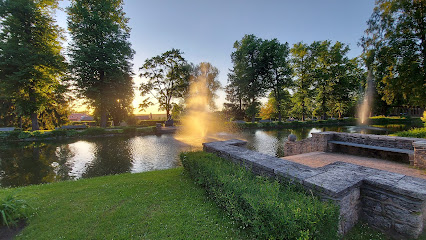
Soviet Secret Bunker
Explore the Soviet Secret Bunker in Līgatne, a fascinating museum revealing the hidden depths of Latvia's Cold War history and military strategy.
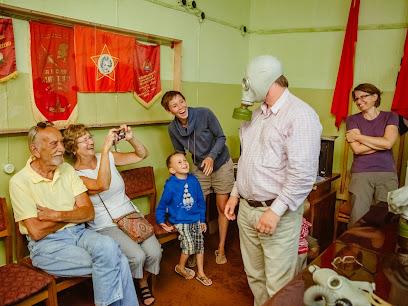
Ērgļu klintis
Explore the stunning Eagle Cliffs in Gaujas National Park, a breathtaking natural attraction in Latvia, perfect for hiking, photography, and nature enthusiasts.
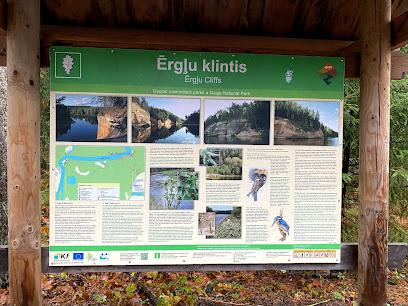
Āraiši lake dwelling Archaeological Park
Explore the fascinating history of Latvia at Āraiši Lake Dwelling Archaeological Park, a cultural landmark of ancient lake settlements and scenic nature.
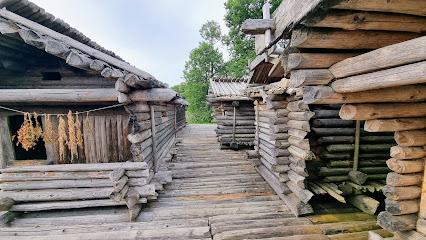
Ozolkalns
Experience the breathtaking beauty and thrilling adventures of Ozolkalns, Latvia's premier ski resort and year-round tourist destination.

Krimuldas Muiža
Explore Krimuldas Muiža in Sigulda: A historic manor surrounded by breathtaking landscapes, perfect for culture and nature lovers alike.
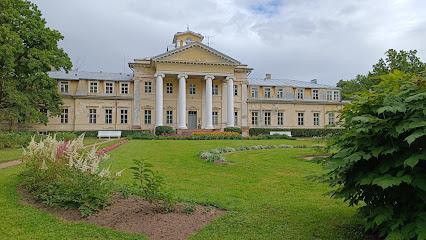
Svētavots
Explore the serene beauty and historical significance of Svēta Vots, a must-visit tourist attraction in Cēsis, Latvia.
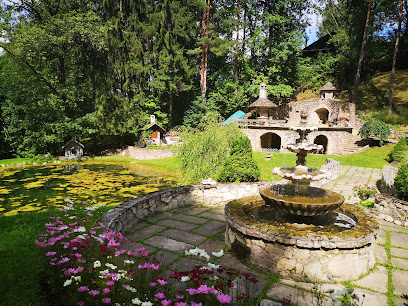
Essential places to dine
BISTRO Bērzkrogs
Experience the best of Latvian cuisine at Bistro Bērzkrogs - where tradition meets modern dining in Cēsis Municipality.
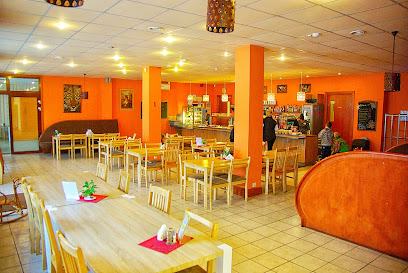
Vecpilsētas Kebabs
Discover deliciousness at Vecpilsētas Kebabs in Cēsis – where authentic flavors meet vibrant ambiance.
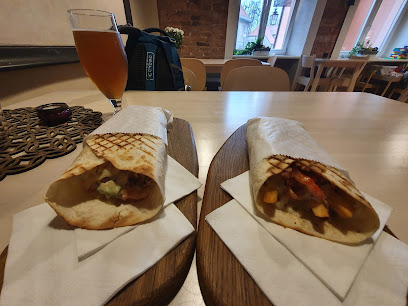
Studio Pizza
Experience mouthwatering pizzas made with fresh ingredients in a cozy atmosphere at Studio Pizza in Cēsis.
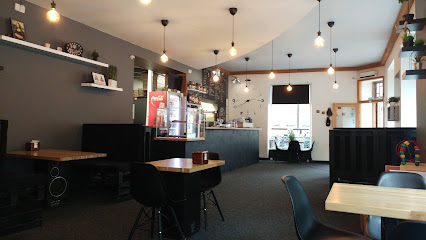
Jāņoga
Discover authentic Latvian cuisine at Jāņoga in Cēsis – where tradition meets modern culinary artistry.
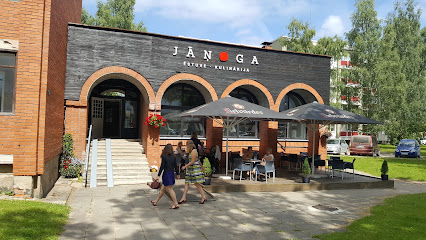
Glendeloka
Experience Glandeloka in Cēsis: A delightful gastropub offering local flavors with modern twists amidst charming surroundings.
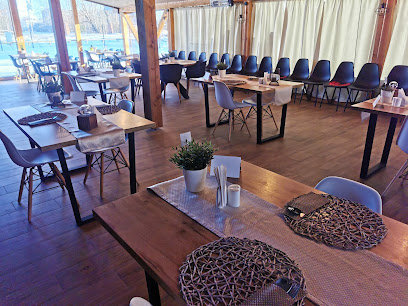
Zaļa Zāle Cēsis
Experience mouthwatering burgers made from fresh local ingredients at Zaļa Zāle in picturesque Cēsis.
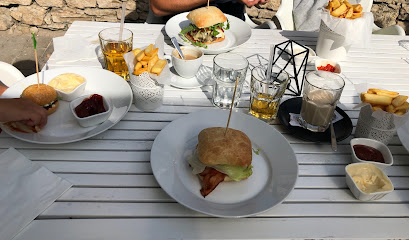
BURGERS 66 Līgatne
Experience delicious burgers and family-friendly dining at BURGERS 66 in scenic Līgatne – where every meal is a celebration.
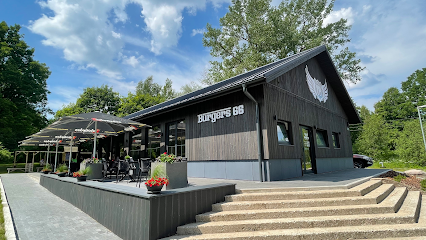
Pie dzirnakmeņa, krodziņš
Experience authentic Latvian flavors at Pie dzirnakmeņa - A charming gastropub in Ieriķi surrounded by stunning nature.

Go To Sushi Bar
Discover authentic sushi flavors in Cēsis at Go To Sushi Bar – where fresh ingredients meet vibrant atmosphere for an unforgettable dining experience.
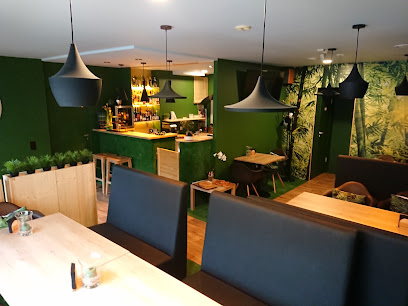
Hotel Tigra
Discover comfort and culinary excellence at Hotel Tigra in Cēsis, where local flavors meet warm hospitality in an idyllic setting.

H.E. Vanadziņš. Ziemeļu restorāns
Experience authentic Latvian cuisine at H.E. Vanadziņš in Cēsis - where tradition meets innovation for an unforgettable dining experience.
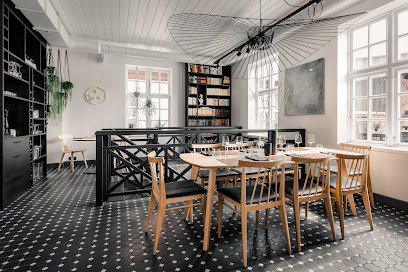
Karlamuiza Country Hotel
Discover tranquility at Karlamuiza Country Hotel - where rustic charm meets modern comfort in the heart of Latvia's beautiful countryside.

Cēsis, Viesnīca
Experience comfort and local flavors at Cēsis Viesnīca - your gateway to exploring Latvia's historical treasures.
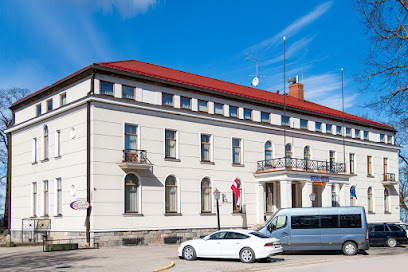
Hesburger
Discover Hesburger in Cēsis: A fast food haven offering delicious meals amidst Latvia's charming landscapes.

Trimpus Craft Brewery - Taproom
Experience authentic Latvian craft beer at Trimpus Craft Brewery - Taproom in Cēsis; where tradition meets taste in every brew.
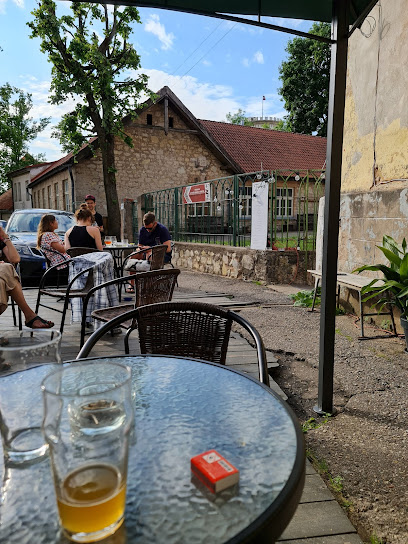
Markets, malls and hidden boutiques
Labais , veikals
Discover the best of Cēsis at Labais Grocery Store, where local flavors and quality products meet in a cozy shopping experience.

Elīna
Discover Elīna, a captivating gift shop in Cēsis, offering handcrafted candles, exquisite floral designs, and stunning glassware for every occasion.
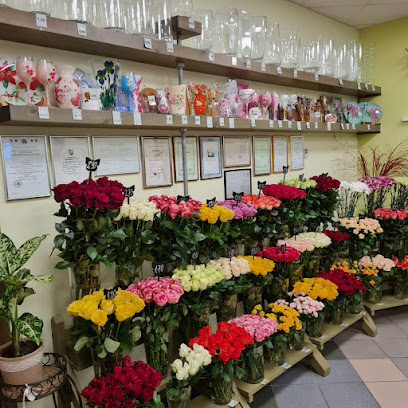
top!
Discover local flavors and essential supplies at this charming grocery store in Cēsis, your perfect pitstop for culinary adventures.

Solo, tirdzniecības centrs
Solo Shopping Center in Cēsis: A dynamic blend of shopping, dining, and local culture awaits you in this vibrant retail hub.

Sweet shop | Candy Shop | Online shop
Experience the sweetest side of Cēsis at this charming candy shop, offering a delightful array of confections and treats for every sweet tooth.

Hobijs , veikals
Explore the great outdoors with top-notch gear at Hobijs, Cēsis' premier hunting and fishing store, tailored for every adventure seeker.
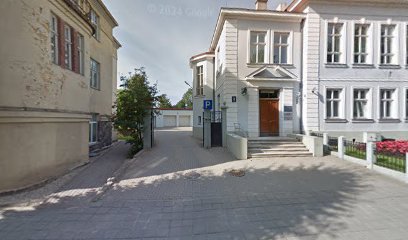
Abrands.lv
Explore the vibrant culinary scene of Cēsis at Abrands.lv, your local grocery store for fresh produce and unique Latvian delicacies.
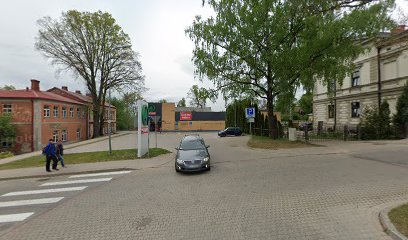
June9Concept
Explore unique fashion at June9Concept in Cēsis, where local artistry meets style in a vibrant shopping experience.

Pie Karlīnes
Explore the charm of Cēsis through unique souvenirs and local crafts at Pie Karlīnes, a must-visit store for tourists.
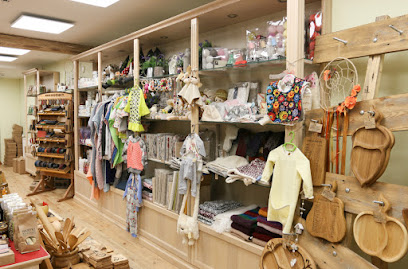
Salons Mottand, mākslas salons Cēsīs
Explore the vibrant art scene at Salons Mottand, a unique gallery in Cēsis offering contemporary art and custom merchandise.

Eko Bodīte (Eko/Deko NAMIŅŠ)
Discover the essence of Cēsis at Eko Bodīte, where unique souvenirs and local treasures await every traveler.

FORŠAS DĀVANAS
Explore the enchanting gift shop FORŠAS DĀVANAS in Cēsis for unique souvenirs and local handicrafts that celebrate Latvian culture.

XJeans - Globuss
Discover the latest fashion trends and local styles at XJeans - Globuss, a must-visit clothing store in the heart of Cēsis, Latvia.
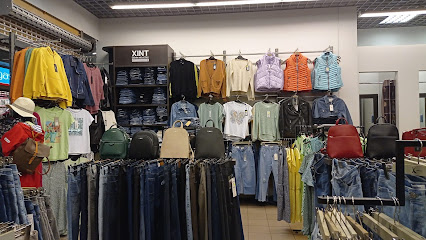
AlkOutlet Dzērieni & Vīni
Explore local and international beverages at AlkOutlet Dzērieni & Vīni in Cēsis, your destination for quality wines and spirits.
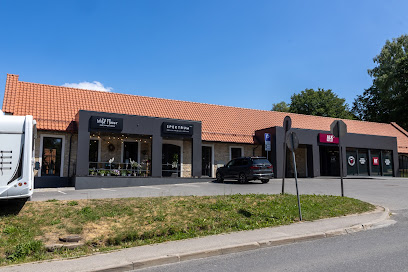
Antique - interjera salons
Explore a treasure trove of vintage elegance at Antique Interjera Salons in Cēsis, Latvia's premier destination for exquisite antique furniture.
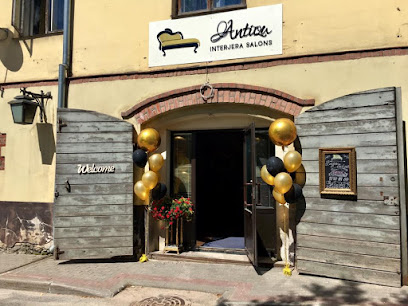
Essential bars & hidden hideouts
Pagrabiņš, Cafe
Experience the warmth and flavors of Cēsis at Pagrabiņš Café, where local delicacies meet a cozy atmosphere in a historic setting.

Jāņoga
Discover the culinary charm of Jāņoga in Cēsis, where traditional flavors meet modern dining in a cozy atmosphere.
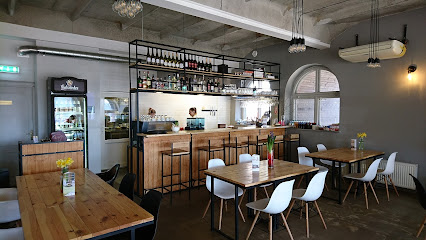
Glendeloka
Discover Glendeloka in Cēsis, where traditional Latvian cuisine meets modern gastropub flair in a warm and inviting atmosphere.
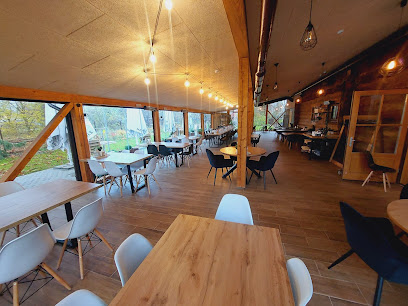
Zaļa Zāle Cēsis
Discover the flavors of Cēsis at Zaļa Zāle, a top-rated hamburger restaurant offering delicious meals in a cozy setting.

Go To Sushi Bar
Discover the fusion of fresh flavors and innovative sushi creations at Go To Sushi Bar in Cēsis, a must-visit for culinary enthusiasts.
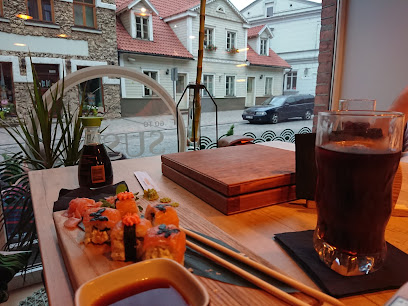
H.E. Vanadziņš. Ziemeļu restorāns
Discover the rich flavors of Latvia at H.E. Vanadziņš, a charming restaurant in Cēsis, offering seasonal dishes and a warm atmosphere.
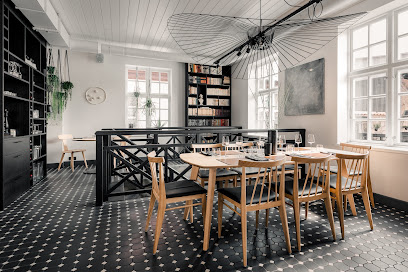
FonoKlubs
Experience the vibrant nightlife of Cēsis at FonoKlubs, where music, dancing, and great drinks await you.
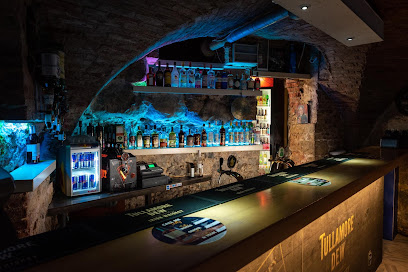
Trimpus Craft Brewery - Taproom
Experience the best of local craft beer at Trimpus Craft Brewery - Taproom in Cēsis, where quality brews and cozy ambiance await.

Cafe 7 Bar
Discover the charm of Cafe 7 Bar in Cēsis, where delicious coffee and a cozy atmosphere await you after a day of exploring.
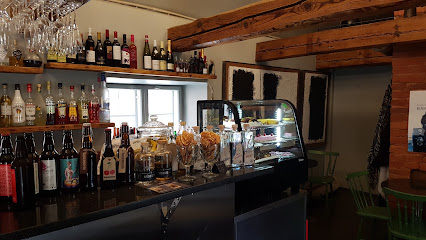
Pande Cafe
Discover the delightful flavors of Latvia at Pande Cafe in Cēsis, where every meal is a celebration of local ingredients and culinary artistry.
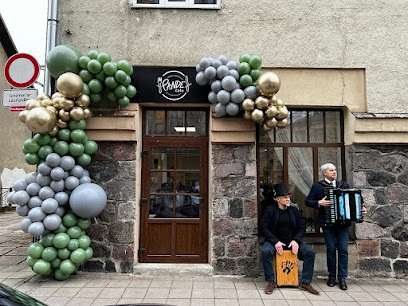
The iela
Discover the best of Latvian and international cuisine at The iela, a cozy restaurant in Cēsis, perfect for food enthusiasts and travelers alike.
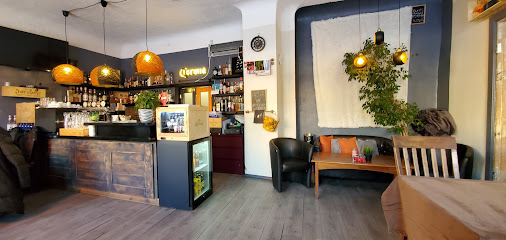
Kest
Experience the culinary magic of Kest in Cēsis, where traditional flavors meet modern cuisine in a warm and inviting atmosphere.
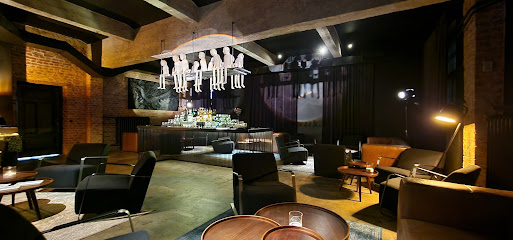
Mango Sky Lounge
Discover the delightful Mango Sky Lounge in Cēsis, where exquisite cuisine meets stunning views in a vibrant dining atmosphere.
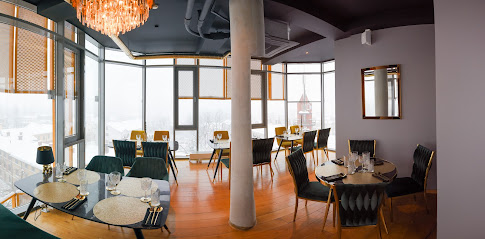
Cēsu novada Jauniešu māja
Discover Cēsu novada Jauniešu māja, a lively lounge in Cēsis perfect for young adventurers seeking connection and local culture.
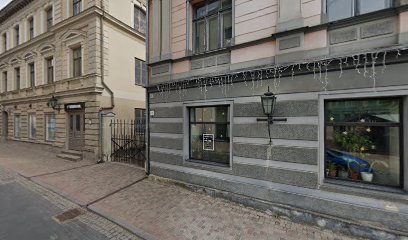
Joker sporta bārs un spēļu zāle Cēsīs, Pļavas iela 5
Discover the lively Joker Sports Bar in Cēsis, where sports meet delicious food and a vibrant atmosphere for an unforgettable experience.

Travel experiences inspired by this city
Explore more travel diariesLocal Phrases
-
- HelloSveiki
[sveh-kee] - GoodbyeUz redzēšanos
[ooz rehd-zeh-shah-nohs] - YesJā
[yah] - NoNē
[neh] - Please/You're welcomeLūdzu
[loo-dzoo] - Thank youPaldies
[pahl-dyehs] - Excuse me/SorryAtvainojiet
[aht-vahy-noh-yet] - How are you?Kā jums klājas?
[kah yooms klah-yahs] - Fine. And you?Labi. Un jums?
[lah-bee oon yooms] - Do you speak English?Vai jūs runājat angliski?
[vahy yoos roo-nah-yat ahng-lees-kee] - I don't understandEs nesaprotu
[ehs neh-sah-proh-too]
- HelloSveiki
-
- I'd like to see the menu, pleaseEs vēlētos redzēt ēdienkarti, lūdzu
[ehs vye-leh-tohs rehd-zeht ay-dyehn-kahr-tee, loo-dzoo] - I don't eat meatEs nēēdu gaļu
[ehs neh-eh-doo gah-lyoo] - Cheers!Priekā!
[prieh-kah] - I would like to pay, pleaseEs vēlētos samaksāt, lūdzu
[ehs vye-leh-tohs sah-mah-ksaht, loo-dzoo]
- I'd like to see the menu, pleaseEs vēlētos redzēt ēdienkarti, lūdzu
-
- Help!Palīdzība!
[pah-lee-dzee-bah] - Go away!Iet prom!
[yeht prohm] - Call the Police!Zvaniet policiju!
[zvah-nyet poh-lee-tsee-yoo] - Call a doctor!Zvaniet ārstu!
[zvah-nyet ahrs-too] - I'm lostEs esmu pazudis
[ehs ehs-moo pah-zoo-dees] - I'm illEs esmu slimns
[ehs ehs-moo sleemns]
- Help!Palīdzība!
-
- I'd like to buy...Es vēlētos pirkt...
[ehs vye-leh-tohs peerkt] - I'm just lookingEs tikai skatos
[ehs tih-kai skah-tohs] - How much is it?Cik tas maksā?
[tsihk tahs mahk-sah] - That's too expensiveTas ir pārāk dārgs
[tahs eer paa-raak daargs] - Can you lower the price?Vai jūs varat pazemināt cenu?
[vahy yoos vah-raht pah-zeh-mee-naht tseh-noo]
- I'd like to buy...Es vēlētos pirkt...
-
- What time is it?Cik ir pulkstenis?
[tsihk eer poolk-steh-nees] - It's one o'clockIr viens pulkstenis
[eer vyehns poolk-steh-nees] - Half past (10)Pusdesmit
[poos-dehs-meet] - MorningRīts
[reets] - AfternoonPēcpusdiena
[pehch-poo-sdyeh-nah] - EveningVakars
[vah-kahrs] - YesterdayVakar
[vah-kahr] - TodayŠodien
[shoh-dee-ehn] - TomorrowRīt
[reet] - 1Viens
[vyehns] - 2Divi
[dee-vee] - 3Trīs
[treehs] - 4Četri
[cheh-tree] - 5Pieci
[pyeh-tsee] - 6Seši
[seh-shi] - 7Septiņi
[sehp-tee-nyee] - 8Astoņi
[ahs-toh-nyee] - 9Deviņi
[deh-vee-nyee] - 10Desmit
[dehs-meet]
- What time is it?Cik ir pulkstenis?
-
- Where's a/the...?Kur ir...?
[koor eer] - What's the address?Kāda ir adrese?
[kah-dah eer ah-dreh-seh] - Can you show me (on the map)?Vai jūs varat mani parādīt (uz kartes)?
[vahy yoos vah-raht mah-nee pah-raa-deet ooz kahr-tees] - When's the next (bus)?Kad būs nākamais (autobuss)?
[kahd boos nah-kah-mah-ees ou-toh-boos] - A ticket (to ....)Bilete (uz ....)
[bee-leh-teh ooz]
- Where's a/the...?Kur ir...?
History of Cesis
-
Cesis, originally known as Wenden, was founded by the Livonian Brothers of the Sword in 1206. The town quickly became a significant center for the military order and played a pivotal role in the region's medieval history.
-
Cesis Castle, a prominent medieval fortress, was constructed in the early 13th century by the Livonian Order. It served as the order's headquarters and played a crucial role during the Livonian Crusades. Today, the castle ruins attract visitors, offering insights into the town’s medieval past.
-
In the 14th century, Cesis became a member of the Hanseatic League, a commercial and defensive confederation of merchant guilds and market towns in Northwestern and Central Europe. This membership facilitated Cesis's economic growth and integration into broader European trade networks.
-
The Livonian War (1558-1583) significantly impacted Cesis. The conflict between various European powers led to the siege and eventual partial destruction of Cesis Castle in 1577. The war marked the end of the Livonian Order's control and ushered in a new era of political shifts.
-
In the early 17th century, Cesis came under Swedish rule following the Polish-Swedish War. The town experienced a period of reconstruction and growth under Swedish administration, benefiting from the stability and reforms introduced by the new rulers.
-
The early 18th century brought devastation to Cesis during the Great Northern War (1700-1721). The conflict between the Swedish Empire and a coalition led by Tsarist Russia resulted in the town suffering from battles, occupations, and subsequent economic decline.
-
The 19th century marked an economic revival for Cesis. The construction of the railway in 1889 connected the town to broader markets, fostering trade and industry. Cesis became known for its crafts, particularly textile production, and experienced significant urban development.
-
Following Latvia's declaration of independence in 1918, Cesis played a role in the Latvian War of Independence. The Battle of Cesis in June 1919 was a pivotal conflict that secured Latvian forces' victory over German and Baltic German troops, solidifying the nation's sovereignty.
-
Cesis, like the rest of Latvia, endured Soviet occupation during World War II and again from 1944 until Latvia regained independence in 1991. During this period, the town witnessed significant changes, including industrialization and the suppression of Latvian culture and traditions.
-
Since regaining independence, Cesis has emerged as a cultural and historical hub in Latvia. The town has preserved its rich heritage while embracing modernity, hosting numerous festivals, cultural events, and attracting tourists with its charming old town, historic sites, and natural beauty.
Cesis Essentials
-
Cesis is located in the Vidzeme region of Latvia. The nearest international airport is Riga International Airport, approximately 90 kilometers away. From Riga, you can take a direct train to Cesis, which takes about 1.5 to 2 hours. Alternatively, you can take a bus from Riga to Cesis, which also takes around 2 hours. For those who prefer driving, car rentals are available at Riga International Airport, and the drive to Cesis offers scenic views of the Latvian countryside.
-
Cesis is a small town, and most of its attractions are within walking distance. For longer distances, local buses and taxis are available. The town also has a bike rental service, which is a great way to explore the area at your own pace. If you plan to visit surrounding areas, renting a car might be the most convenient option.
-
The official currency in Latvia is the Euro (EUR). Credit cards are widely accepted in Cesis, including in hotels, restaurants, and larger shops. However, it is advisable to carry some cash for small purchases or when visiting more remote areas. ATMs are available in the town center, and many banks offer currency exchange services.
-
Cesis is generally a safe destination for tourists. Like anywhere, it is wise to take standard precautions such as avoiding poorly lit areas at night and keeping an eye on personal belongings in crowded places. There are no specific high-crime areas targeting tourists, but always remain vigilant and aware of your surroundings.
-
In case of emergency, dial 112 for immediate assistance. Cesis has a local police station and medical facilities, including a hospital and pharmacies where you can purchase over-the-counter medications. It is recommended to have travel insurance that covers medical emergencies.
-
Fashion: Do dress comfortably and appropriately for the weather. When visiting religious sites, dress modestly and avoid wearing revealing clothing. Religion: Do respect local customs and traditions. Cover your head when entering churches. Public Transport: Do be respectful and give up your seat to elderly passengers. Don't eat or drink on public transport. Greetings: Do greet people with a handshake or a nod. Latvians appreciate politeness. Eating & Drinking: Do try local dishes and accept food offerings graciously. Don't refuse hospitality, as it is considered impolite.
-
To experience Cesis like a local, visit the local markets where you can buy fresh produce and traditional Latvian goods. Engage with locals, as they are often friendly and willing to share stories about the town's history and culture. Don't miss visiting the Cesis Castle, a medieval fortress that offers a glimpse into the town's past. For a unique experience, take a walk in the Gauja National Park, which surrounds Cesis and offers stunning natural scenery.
Trending Landmark in Cesis
Nearby Cities to Cesis
-
Things To Do in Sigulda
-
Things To Do in Valga
-
Things To Do in Riga
-
Things To Do in Jurmala
-
Things To Do in Viljandi
-
Things To Do in Võru
-
Things To Do in Pärnu
-
Things To Do in Tartu
-
Things To Do in Talsi
-
Things To Do in Paide
-
Things To Do in Daugavpils
-
Things To Do in Panevėžys
-
Things To Do in Rapla
-
Things To Do in Šiauliai
-
Things To Do in Kuressaare













